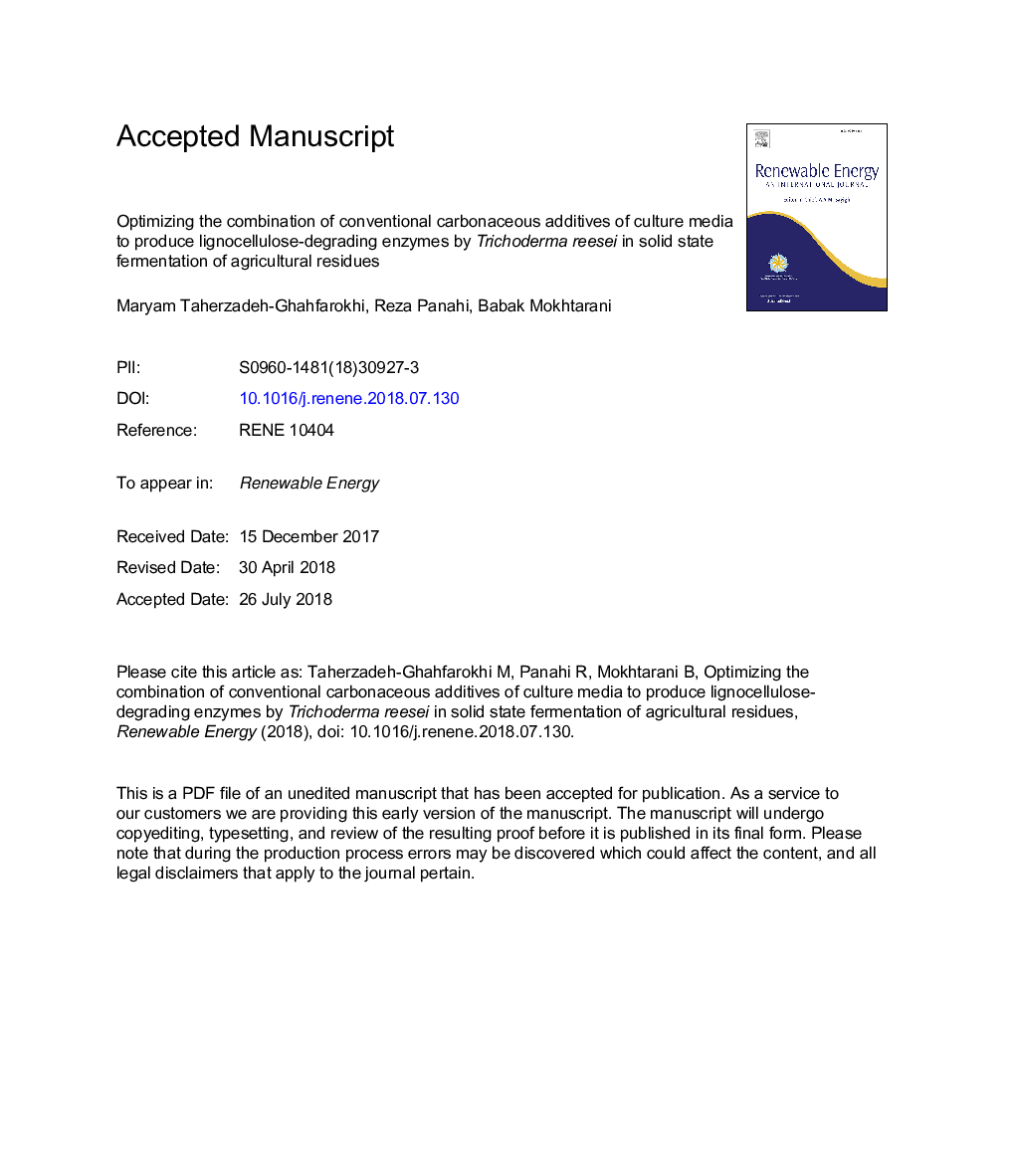| Article ID | Journal | Published Year | Pages | File Type |
|---|---|---|---|---|
| 6763707 | Renewable Energy | 2019 | 44 Pages |
Abstract
Improving the production of lignocellulose-degrading enzyme such as cellulase and xylanase substantially increases the chance for cost-competitive production of cellulosic biofuel and other chemicals from such a biomass. In this study, the possible effects of carbonaceous additives including Tween 80, betaine, carboxymethyl cellulose (CMC) and lactose on cellulases and xylanase production were investigated individually or in combination. The enzymes were produced by Trichoderma reesei in solid state fermentation of wheat straw, wheat bran, rice straw and rice husk. The results proved that an individual additive could be an inducer or inhibitor based on the type of carbon source and targeted enzyme. For applying additives in combination, their roles depended on not only the type of carbon source and targeted enzyme but also their concentrations. Furthermore, a single additive with inhibitory role could be an inducer in combination with the other additives. For the best induction, the xylanase activity was about 469 U/gds with betaine as a single inducer. It increased to 218% with the mixture of Tween 80, betaine and CMC, supporting the combination of additives is more inducing. Applying the mixture of inducers can highly improve the process efficiency in lignocellulose-based biorefineries for both fuel and chemicals production.
Related Topics
Physical Sciences and Engineering
Energy
Renewable Energy, Sustainability and the Environment
Authors
Maryam Taherzadeh-Ghahfarokhi, Reza Panahi, Babak Mokhtarani,
